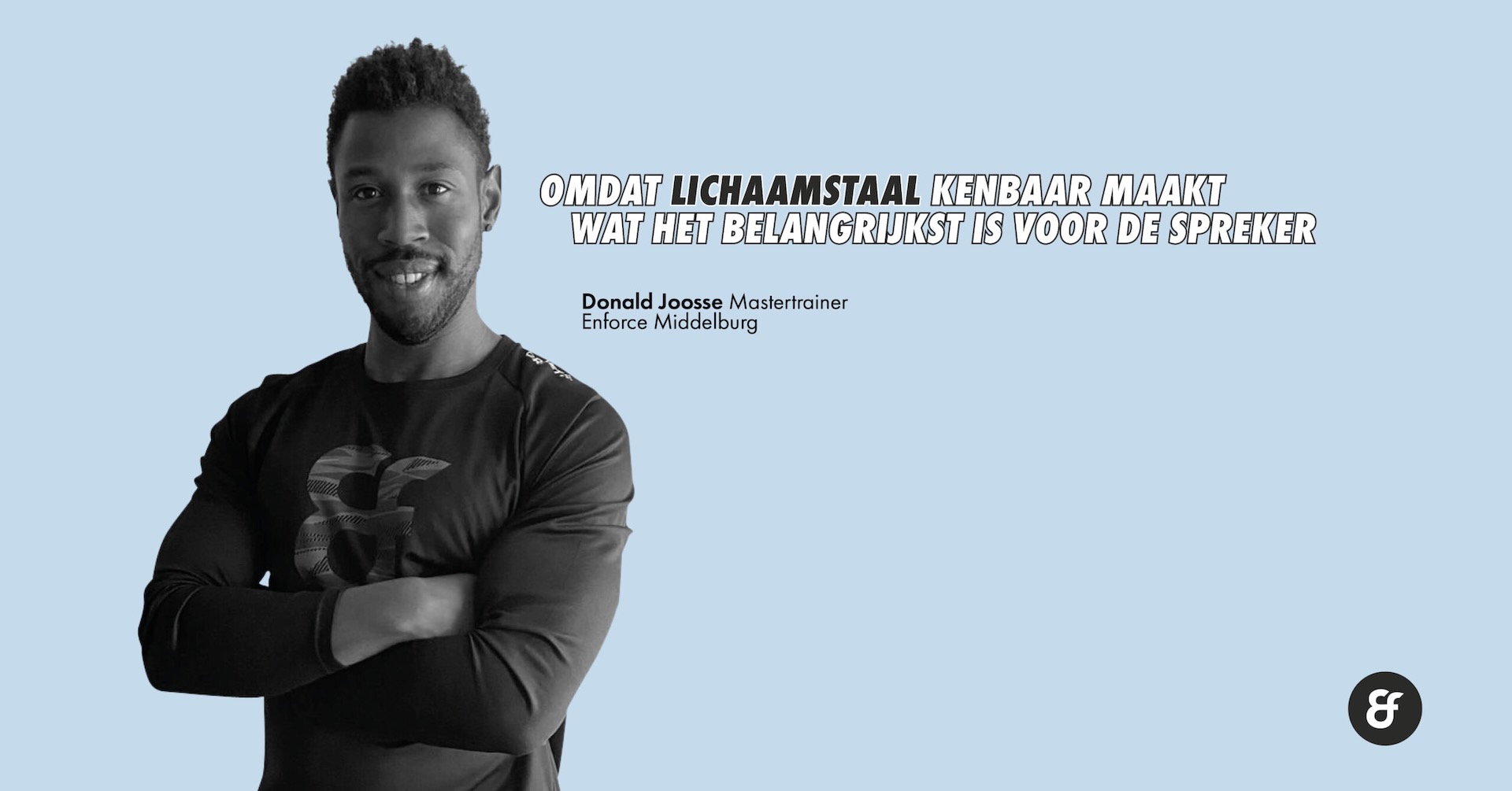Did you know that there is an overlap between the type of information that is conveyed verbally and the type of information that is conveyed non-verbally, yet they still divide their tasks naturally?
That's how it is. Using words is the best way to convey factual information. If someone wants to tell you the title of a film, the status of the competition or the price of those nice pants, you mainly use words. Words are also used to describe emotions, often in combination with body language. But emotionally, body language has an advantage. Nonverbal communication not only expresses someone's feelings, it often also indicates how that person deals with her feelings. Let me give you an example: someone's facial expression indicates that she is angry. The rest of her body shows what she does with those angry feelings. Someone can approach another threateningly, with clenched fists, ready to score a match. Or she suppresses her anger with muscle tension. She can also express her feelings by stamping her foot just like my rabbit does when he doesn't get enough attention, hitting her fist on the table and so on. It provides insight into what someone does with his or her feelings by looking at her body language.
Even when you make a conscious effort not to express emotion through body language, your true feelings usually leak out from under that attempt at self-control, even if only for a moment. Observing body language is essential for effective listening because body language communicates what is most important to the speaker. Suppose a person prefers not to express her feelings, or cannot find the right words to describe her emotions, or is so thoroughly repressed that she is unaware of them. In all these cases, non-verbal communication reflects how someone really feels.
Since communication between people is largely non-verbal, reading body language is one of the most important skills for effective listening. The nonverbal elements of communication are especially important for understanding other people's feelings. People often try to hide their feelings by suppressing their nonverbal signals. This is usually less successful than attempts at verbal camouflage: the emotions 'leak' through our attempts to control our body language. Let me give you these guidelines that will ensure an improved 'reading' of body language:
1. Pay attention to the most useful clues: facial expression, vocal expression and posture, gestures and 'actions'.
2. Read nonverbal cues in context.
3. Be aware of your own feelings and physical reactions.
Body language is sometimes clear and unambiguous for some people. But for others it is difficult to decipher. When the listener accurately mirrors her understanding of what the speaker's body language is saying, it can greatly improve communication.
Donald Joosse
Enforce Master Trainer
donald@enforce.nl
Schedule a free coaching session or take the online membership test
Does this sound good and are you also ready for a fitter & healthier life? Then schedule a free coaching conversation now Join me or one of the other master trainers! 100% risk-free, the first step has never been easier!
Are you still in doubt? Then take the no-obligation online membership test: 6 short questions (only 1 minute to complete) to discover whether Enforce suits you!


